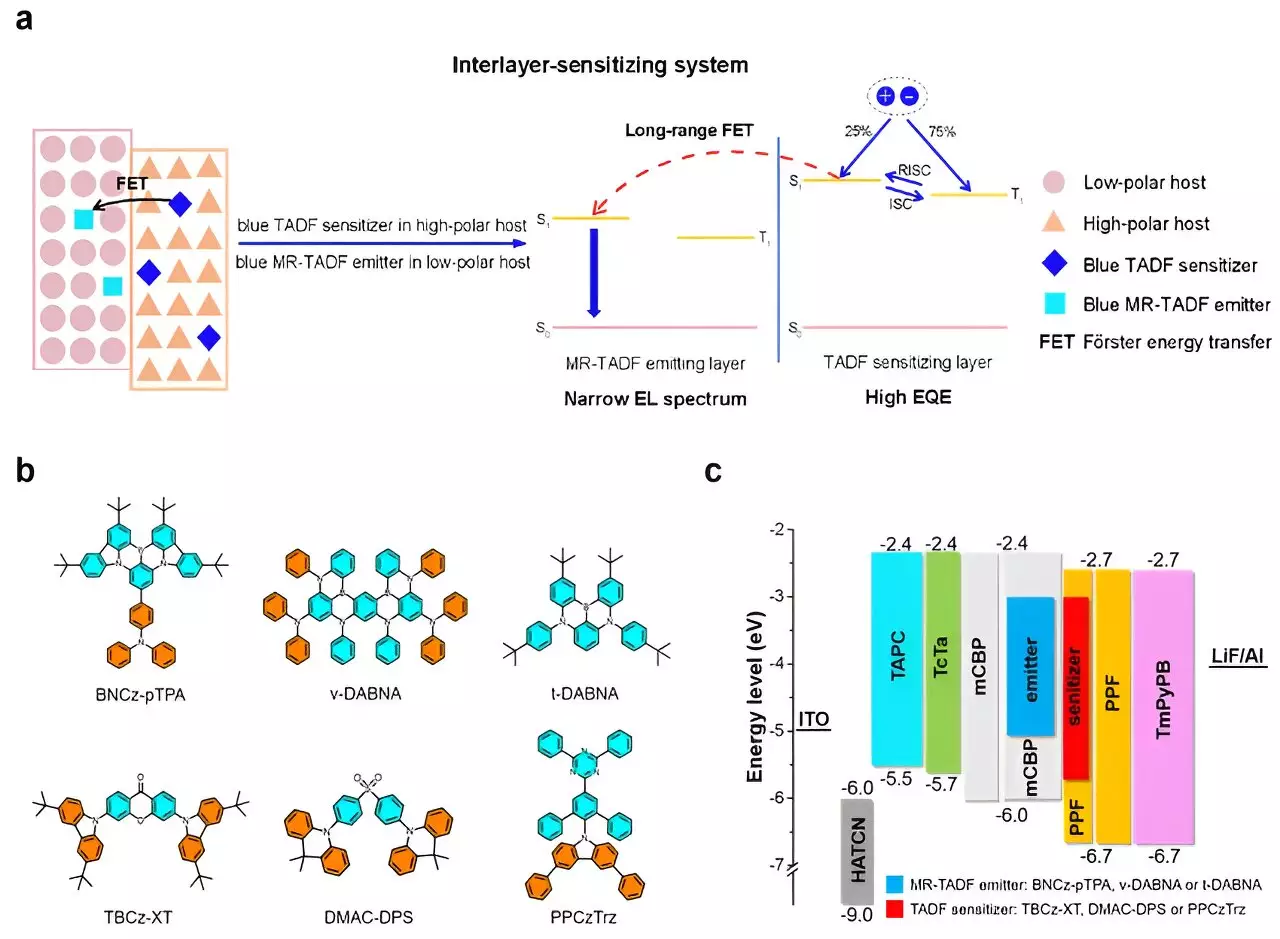Multi-resonance thermally activated delayed fluorescence (MR-TADF) materials have emerged as promising candidates for organic light-emitting diodes (OLEDs) due to their narrow electroluminescence (EL) spectra. However, many MR-TADF emitters face challenges such as serious triplet-involved quenching processes that reduce EL efficiencies and cause efficiency roll-offs.
In a recent study published in Light Science & Applications, a team of scientists from South China University of Technology, led by Professor Zujin Zhao, proposed an interlayer sensitization strategy to address the limitations of blue MR-TADF emitters. This strategy involved separating the TADF sensitizer and MR-TADF emitter into two adjacent emitting layers (EMLs) with different hosts. By utilizing long-range Förster energy transfer (FET), the TADF sensitizer was able to sensitize the MR-TADF emitter effectively.
The team successfully demonstrated the effectiveness of the interlayer sensitization strategy by fabricating high-performance blue hyperfluorescence OLEDs using different blue MR-TADF emitters and TADF sensitizers. These OLEDs exhibited strong blue light with narrow EL spectra and outstanding external quantum efficiencies (EQEs) of up to 38.8%. These results showcased a significant improvement in EL efficiency and color purity when compared to unsensitized devices.
The findings of this study highlight the potential of the interlayer sensitization strategy in the development of high-performance blue hyperfluorescence OLEDs. By optimizing the sensitization process and utilizing distinct host materials for the TADF sensitizer and MR-TADF emitter, researchers can achieve enhanced EL efficiencies and color quality simultaneously. The successful application of this strategy opens up new possibilities for the construction of next-generation OLEDs with improved performance characteristics.
The development of the interlayer sensitization strategy represents a significant advancement in the field of OLED technology. By leveraging the principles of energy transfer and utilizing separate host materials for the sensitizer and emitter, researchers have been able to overcome the challenges associated with blue MR-TADF emitters. This innovative approach provides a promising pathway towards the realization of high-performance blue hyperfluorescence OLEDs with exceptional EL efficiencies and color purity.


Leave a Reply